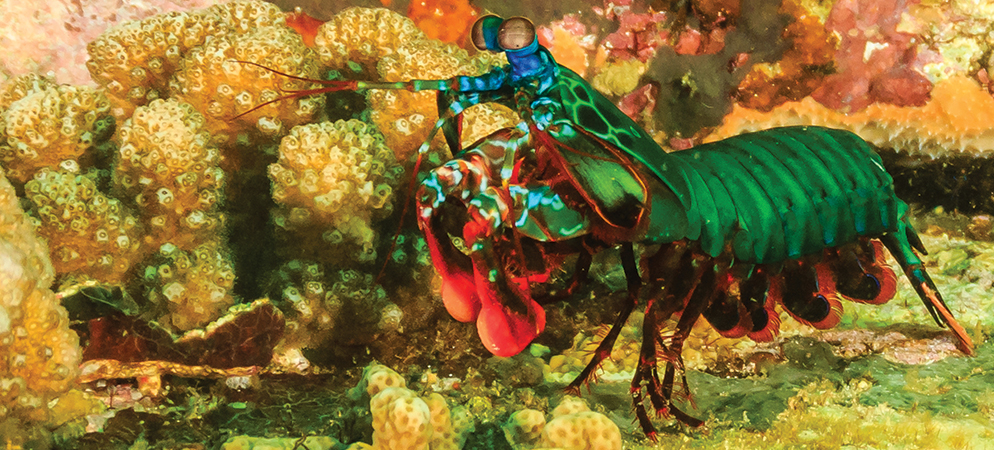For all its apparent complexity, the human eye is actually rather simple compared to the eyes of some of our distant animal relatives. Basically, human vision works like this: light enters the eye via the cornea and gets refracted by the lens, thereby forming an image on the retina. The retina detects light photons and sends neural signals to the brain via the optic nerve. There’s just one problem though. The refraction process causes images to appear upside-down. It’s up to the brain, then, to adapt and correct the data it receives. In addition to displaying information upside-down, images seen by each eye reach your retinas as flat, two-dimensional projections. Your brain is responsible for combining those images to create an accurate 3D picture and provide depth perception. Because our brains handle such a significant portion of the advanced image processing, our eyes don’t have to do as much of the work. The human eye is such a slacker!
Most of the animal kingdom doesn’t have this luxury. You’ve heard the expression “eagle eye,” right? Birds of prey have well-developed eyesight that allows them to spot rodents running across the ground from hundreds of feet away, making it easier for them to catch dinner. Eagles have the equivalent of 20-5 visual acuity in the center of their view due to a shaped fovea and a unique blood supply strategy, although this incredible vision comes at the expense of other senses, such as taste. That might explain the questionable diet. Of course, eagles can’t order takeout, so humans totally win this round.
While you may be familiar with birds’ amazing ability to see things at a great distance, you might not know about a mighty little troublemaker called the mantis shrimp. Although it may be a bottom feeder, the mantis shrimp is the proud owner of some of the most advanced eyes in the world. Mantis shrimp have 12 photoreceptors per eye, whereas humans have a measly three. The mantis shrimp is capable of perceiving both polarized light and multispectral images, and at least two species can detect circularly polarized light. In addition to their incredible eyes, mantis shrimp possess powerful appendages designed to spear or smash prey at lightning speed. Several of the largest mantis shrimp species are capable of shattering glass, much to the dismay (and expense) of aquarium operators. Do not tangle with a mantis shrimp. It will mess you up.
So why is Biamp talking about obscure sea creatures? One, mantis shrimp are extremely cool, and two, TesiraLUX (also cool) is to other network video technologies what the mantis shrimp’s eye is to the human eye. Work with me, people. With TesiraLUX, you have access to granular bandwidth management tools, and you’re free to compress video streams while maintaining visually lossless outputs. Prefer to go full throttle with your content? TesiraLUX supports that too. That’s why we included two different ports – a 1Gb port and a 10Gb port – to let you choose the transmission options that are right for you. Tesira software will even indicate when a stream may be too large for TesiraLUX’s media port’s capacity.
TesiraLUX’s technology does the processing work for you, giving your brain some well-earned time off, and leveling the playing field – just a little – with the mantis shrimp. What now, tiny crustacean?
